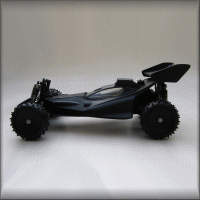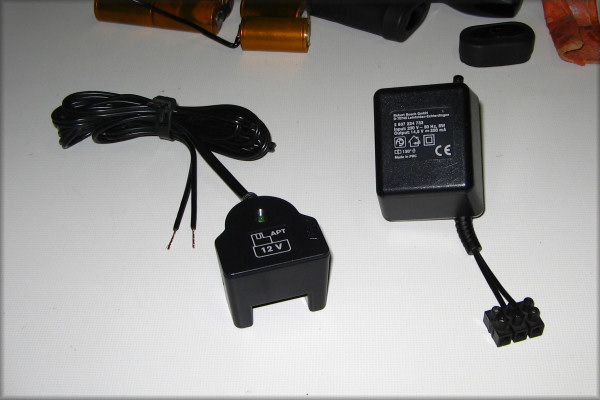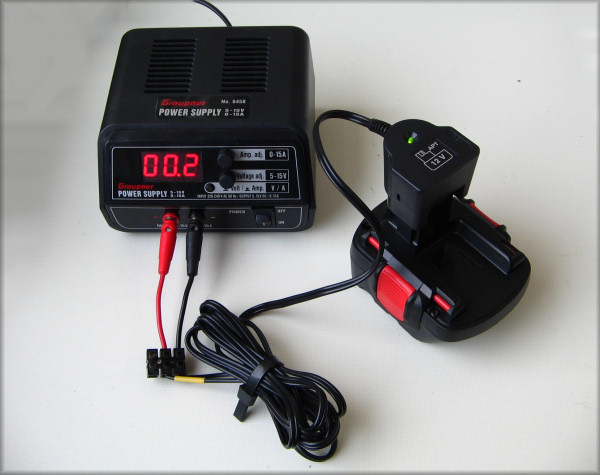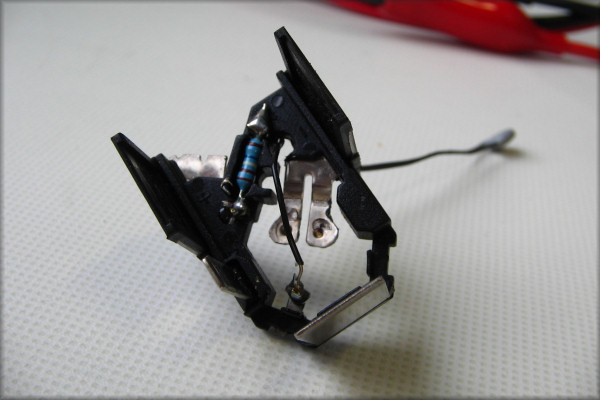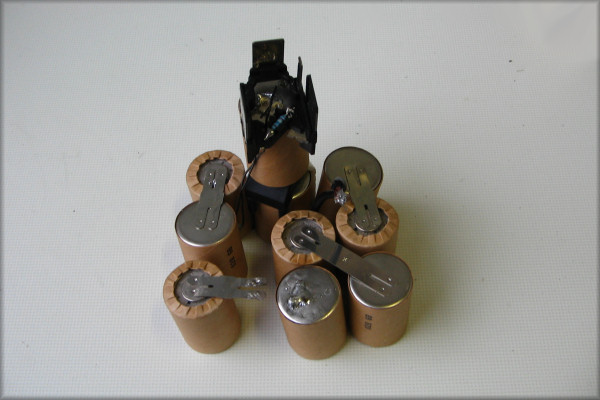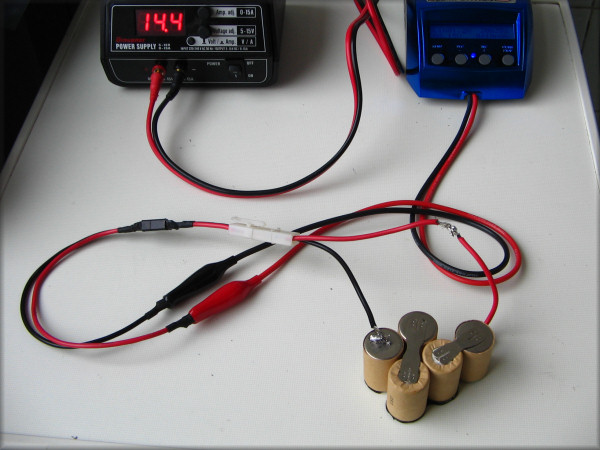Poll: What are you charging? (was ended 0000-00-00 00:00:00)
| NiCd |
|
5 | 15.6% |
| NiMH |
|
13 | 40.6% |
| Lipo |
|
14 | 43.8% |
| Other |
|
No votes | 0% |
| Total number of voters: 32 ( Jack Willy Orz, cumminsdoc, Purple_rob, nivapilot, uncletom ) See more | |||
| Only registered users can participate to this poll | |||
TOPIC:
What are you charging (with)? 9 years 10 months ago #29317
|
Since the adapter to charge the batteries for my cordless drill is not working anymore, I think I'll start using the LRP Pulsar for that. Opening up one of the battery casings, it's basically a 12V NiCd race pack with
Hopefully I'll do a better job than this though : Edit - Nope, they have 10 cells (obviously). My RC charger goes up to 8, even though the max output is 12V. |
|
|
Please Log in to join the conversation.
Last edit: by Edou.
|
What are you charging (with)? 9 years 10 months ago #29323
I'll figure that out soon enough. Too bad with muy cheapo batteries, you can never use the multimeter when you need it. Or the kitchen scale, digital caliper... Buy a pack of 10 (for 79 cents), use one and discover the rest is empty by the time you need another. Anywho, does anybody have an idea if I should be able to charge a 12V Bosch cordless drill pack with this power supply alone? www.manualslib....tml?page=6 I do believe so. Needs 14.5V and 250mA to get charged (according to the broken adapter). |
|
|
Please Log in to join the conversation.
Last edit: by Edou.
|
What are you charging (with)? 9 years 10 months ago #29326
|
Yep, the saga continues. Apparently my power supply can charge all kinds of stuff directly, except for NiMH and NiCd...
Must have something to do with sensoring the internal processes. But the adapter for my cordless drill is not quite what you'd expect. I think it is a basic power supply (that I think is broken) with this needed sensor inside the connector to go on the battery : If that is so, I do not see anything opposing just connecting it to the power supply with the same feed as the adapter. Feedback much appreciated. |
|
|
Please Log in to join the conversation.
Last edit: by Edou.
|
What are you charging (with)? 9 years 10 months ago #29349
|
So does it work? Yes! If the packs were any good still... some strange and unexpected results there.
I think indeed that separate connector can make the power supply charge NiCds, it 'communicates' with this blue diode : Now I have two batteries, one I considered to be over the hill (bought it used for a tenner long ago) and one that came with the drill and hasn't been used much. The latter I thought should still be in good condition. But neither would get charged... The older pack would make the drill turn minimally (as I had noticed before) after having been charged for a few hours but the one that was supposed to be good seemed to be completely sleeping with the fishes. The light on the charge connector would even go out when it was placed on the pack. So I decided to cut each pack (consisting of ten cells) in half so I could analyse them with my Pulsar charger. I can only conclude that when the original adapter failed, it took the 'good' pack with it somehow. The voltage stagnates at 0.55V when charging (for 5 cells!) and I can only conclude these cannot be saved anymore : The insides of a 12V Bosch battery pack... Analysing the other one, I could only feed it 25mAh for a full charge. Lot of messing around for nothing you'd think... But then I decided to zap that pack (it's only 1.2Ah) with 2A using the 'dumb' Robbe charger for a while. And I can now report that it seems to be getting back to it's full capacity! So hopefully I'll have one battery at least to use with this cordless drill. If I ever get my eye on a set of |
|
|
Please Log in to join the conversation.
Last edit: by Edou.
|
What are you charging (with)? 9 years 10 months ago #29357
|
I need to rebuild one battery pack (found the culprit I murdered, it'll become 6V)...
And noticed the cells are glued together when it comes to length. Has anybody tried this with CA or might Araltide be a better idea? I know hotglue is commonly used (but don't want to buy any). Bosch pack is going strong by the way. And I believe I have a bit more insight in charging NiCds because of the experiments... Even though Graupner says to not charge directly with their power supply, I will use it next time a pack is lazy and give it a good old zap. No delta peak or other sensors, just a short period for cell revival. Using a hand and my ears as the process sensors. This should not be problematic, the special treatment NiCds seem to need is about high temperature and overcharging. |
|
|
Please Log in to join the conversation.
Last edit: by Edou.
|
What are you charging (with)? 9 years 10 months ago #29371
|
I was too slow off the mark there...
Right, you can charge 12V Bosch NiCd packs with an unregulated 12V transformer (eg 4 amp car battery charger etc) hooked up to a vintage resistor (Run-back) type charger (eg Acoms) - The transformer is likely to be poking out about 16V & the resistors soak up anything left over that the battery doesn't want. Charging current will be about 1A. There are 3x connections on the Bosch packs, +ve, -ve & "sensor". The sensor is normally just a thermistor, the Bosch charger looks at that & when the temperature of the pack suggests it might be charged, the charger turns itself off. Great until you have a tired pack that gets warm when you charge it, the "intelligent" charger turns it off before it's done & makes it worse.... +VE & -VE are the terminals on the sides of the pack "nose", sensor is usually either on the front or a small spade in a hole in the top. Usually the sensor terminal is +ve in relation to 0V. The blue "diode" in your pack is actually a resistor, probably there to fine-adjust the value of the thermistor (Which would normally be buried amongst the cells) OR possibly it might be there instead of the thermistor, just to trick the charger (The charger also looks at charging current, but the sensor connection is needed to turn it on) - is the pack a chinese copy?. Yes the cells they use in Bosch packs are pants, yes they can be made better by rebuilding with better quality NiCd cells, BUT some them aren't sub-C size, so check before destroying a race pack. The biggest killer of power tool batteries are the "Idiot-proof" automatic chargers. The packs definitely benefit from being fast charged on a run-back/resistor type charger. NEVER charge directly off a power supply, you'll destroy either it or more likely, the cells. You MUST use some kind of power resistor in series with the battery/transformer, even if it's only a 21W automotive bulb, otherwise the transformer will be pumping more current through the cells than they can soak up (Everything gets hot & not charged properly). Certainly don't even try it with a switch-mode power supply - if you're lucky it will shut down & refuse to attempt a charge, if you're unlucky one (Or more) of the semiconductors will fail & you could have a full-current mains explosion on its input side (Size of the bang will depend on the PSUs rating). It's worth noting that SMPSs rarely blow the onboard fuse when the switching transistors fail, usually the current flow stops when a PCB track melts, another component blows, or your house RCD trips - I guess the destruction is quicker than the fuse can react to
Custom F2
...
Hilux crossmember drawing
...
F2 axle drawing
...
Quattro radio lid
...
Holiday Buggy motor bracket drawing
...
Quattro resto
...
HitnMiss engine
...
Wild Willy resto
...
Mardave Cobra resto
...
Thunder Dragon resto
...
Grasshopper resto
...
XR311 resto
...
Modded XR311
...
Carbon 25th scratch build
The following user(s) Liked this: Edou
|
|
|
Please Log in to join the conversation. |
What are you charging (with)? 9 years 10 months ago #29374
|
Thanks for the feedback. Note to self - don't blow up the power supply.
Kinda value my Graupner way too much for that... If the pack gets lazy again, I'll just hack it up in two (like I did here) and zap it that way. Don't think the packs are Chinese clones, although the used one I bought might be rebuilt at some time. Can't complain in any case, it is now supplying power like mad. Making it able to use my drill once more. Batteries from a race pack won't fit by the way - this Bosch needs 4/5 Sub Cs. |
|
|
Please Log in to join the conversation.
Last edit: by Edou.
|
What are you charging (with)? 9 years 10 months ago #29375
|
Got the idea it was a diode from googling, it seems to be connected to both poles and I thought
this guy
described it :
My theoretical knowledge is rather limited here... |
|
|
Please Log in to join the conversation.
Last edit: by Edou.
|
